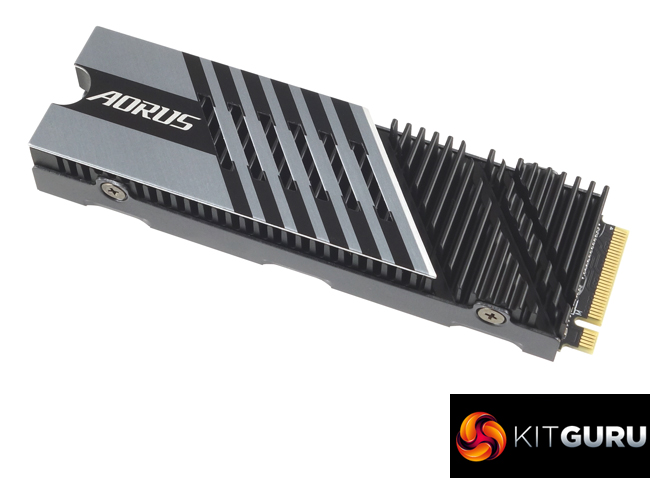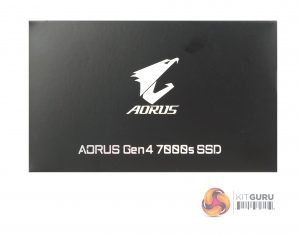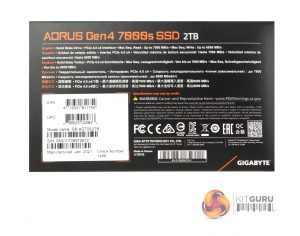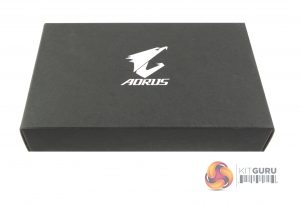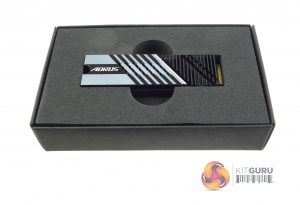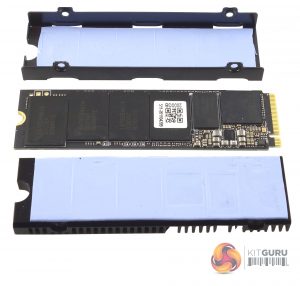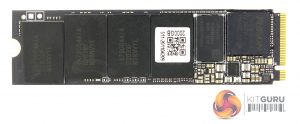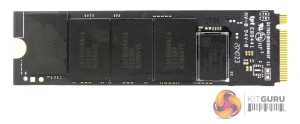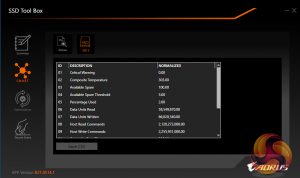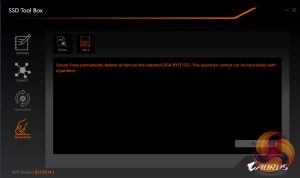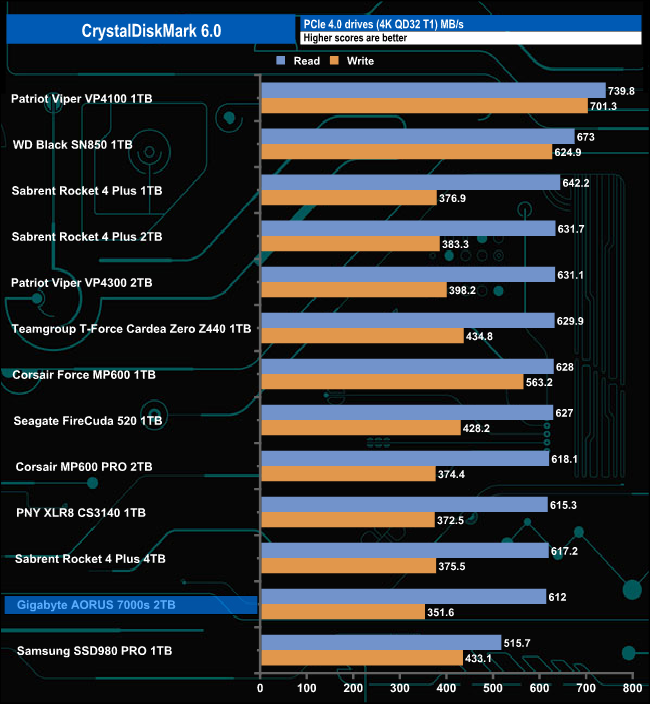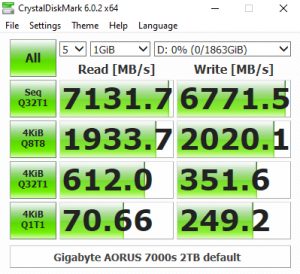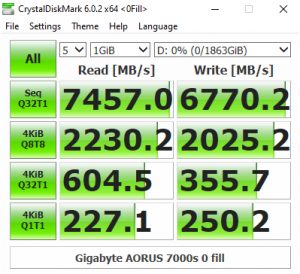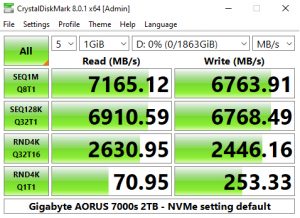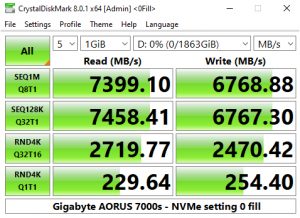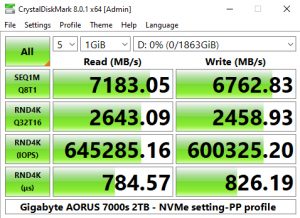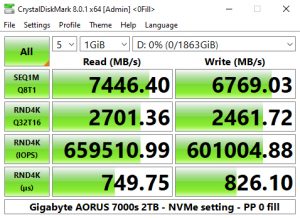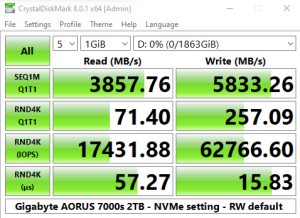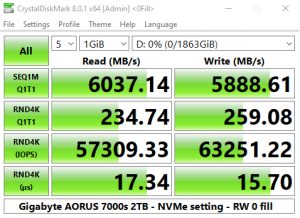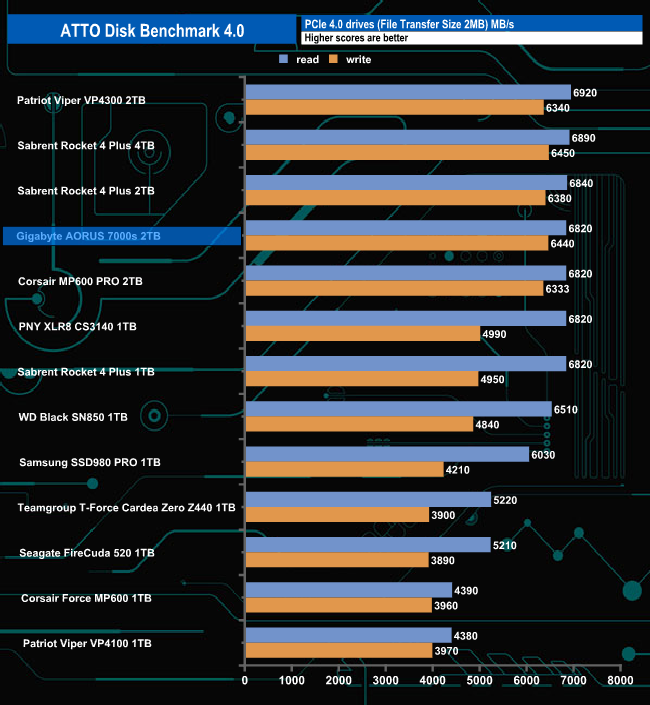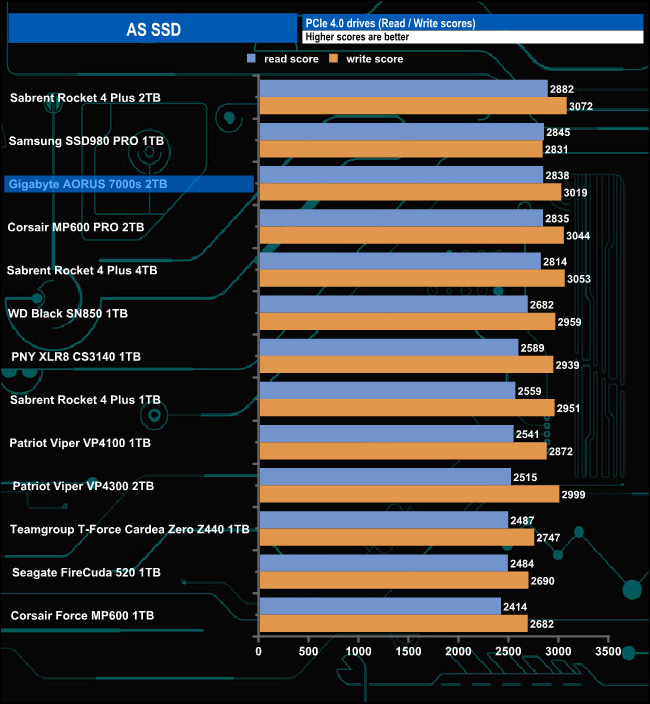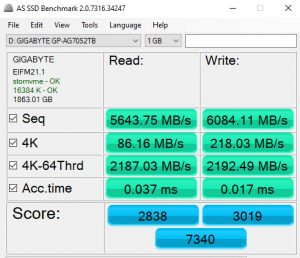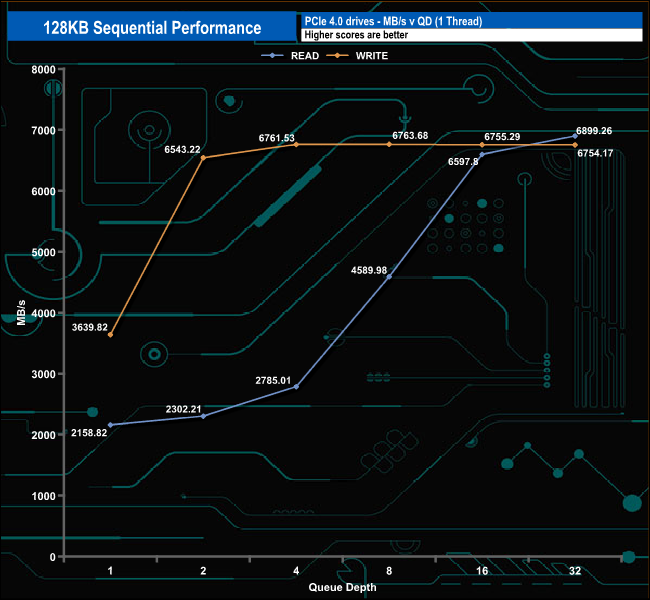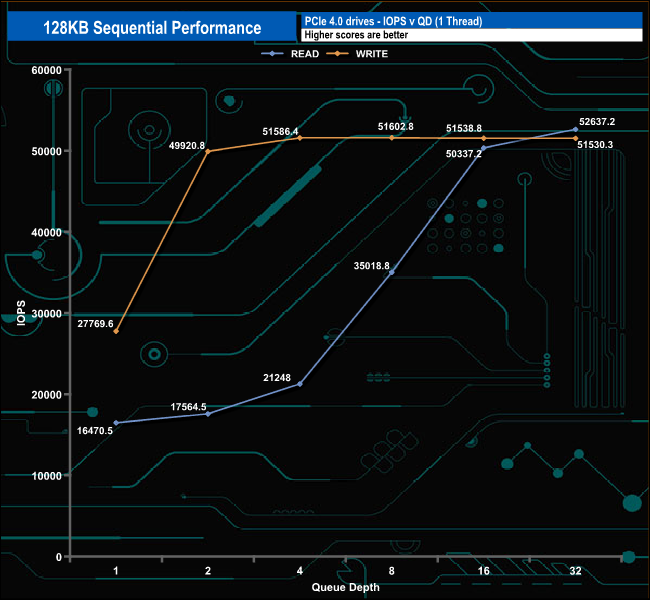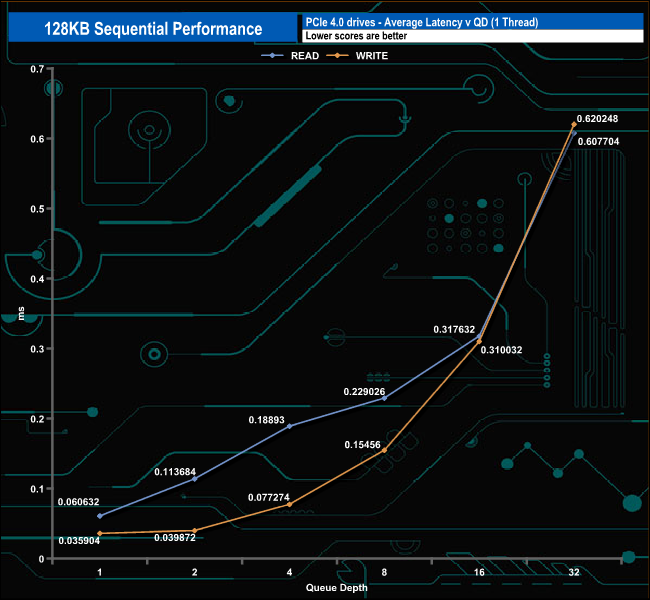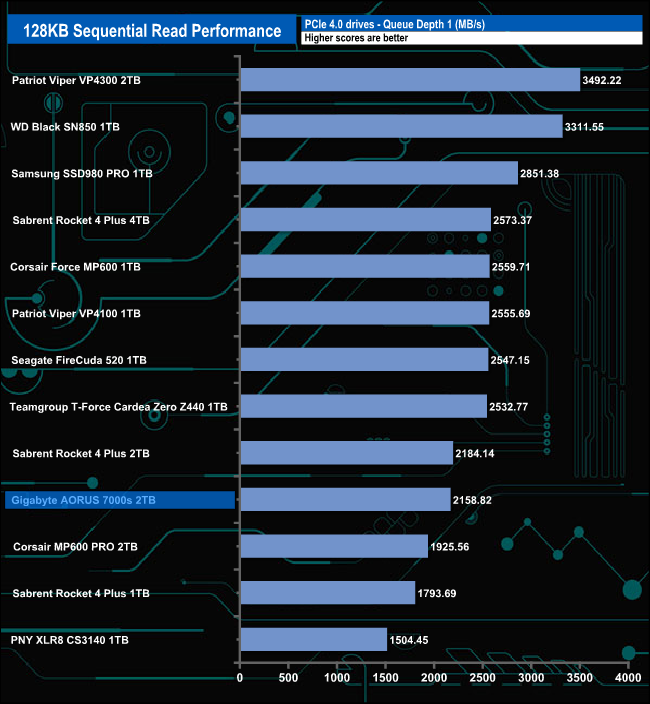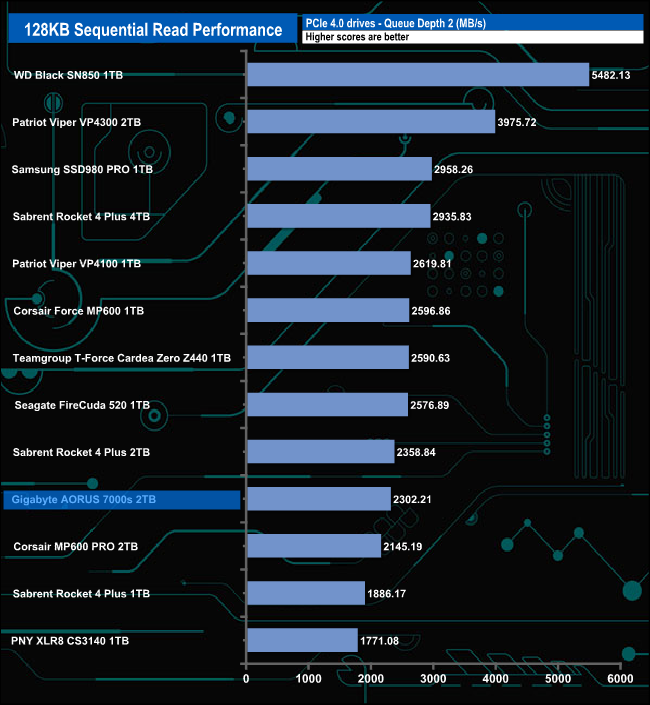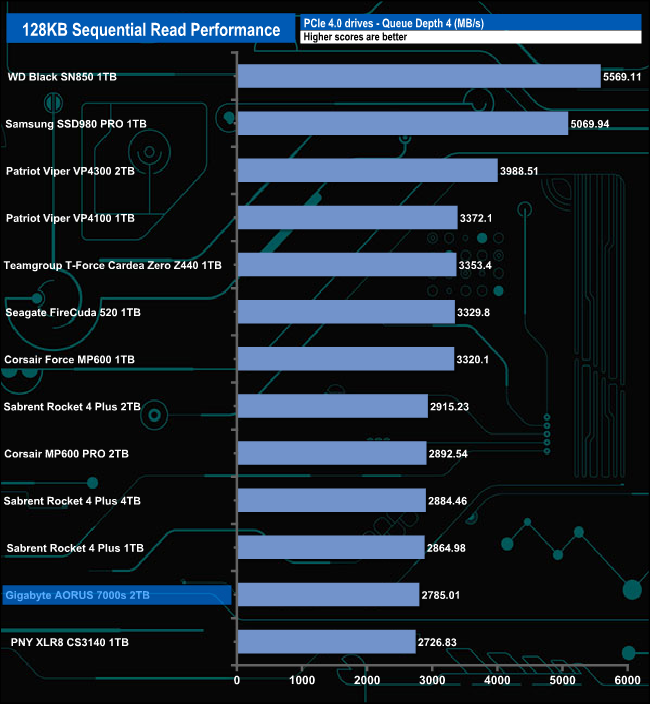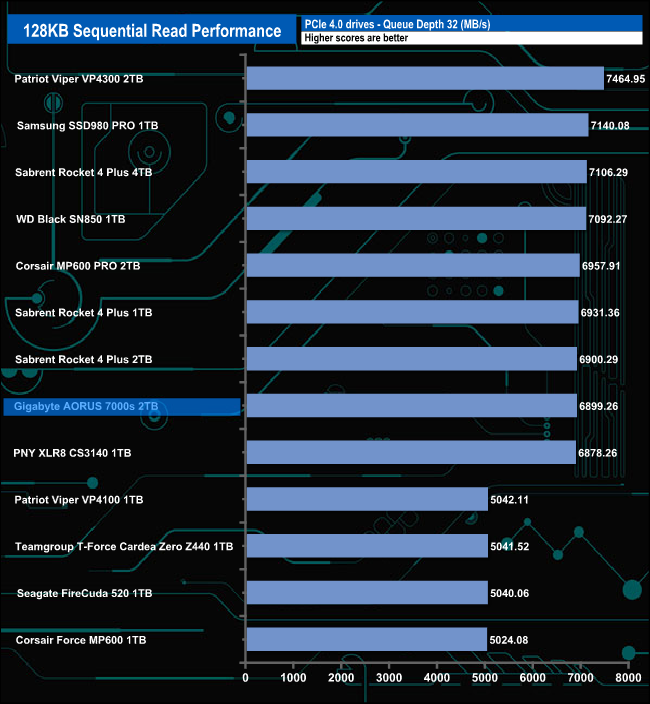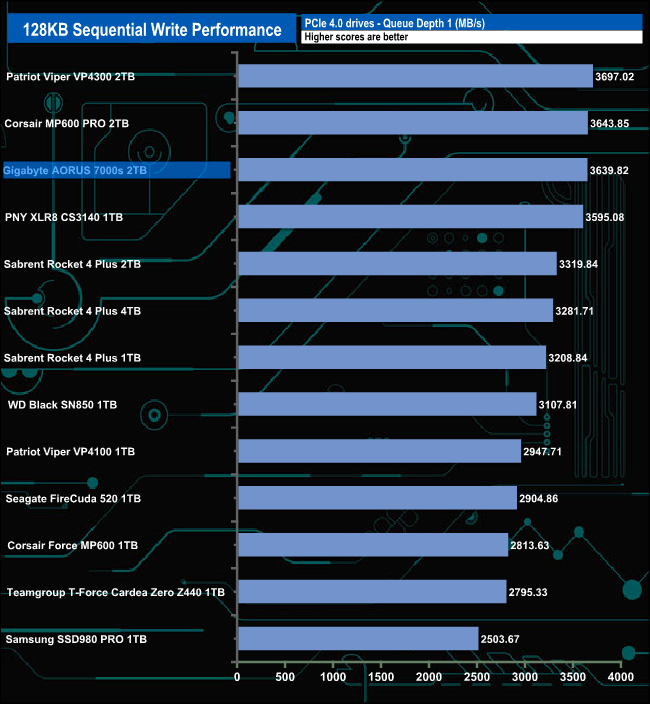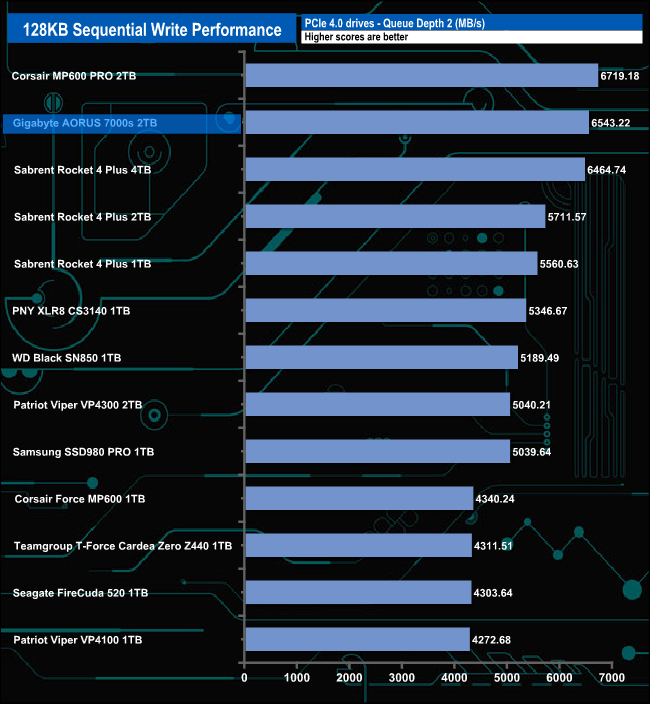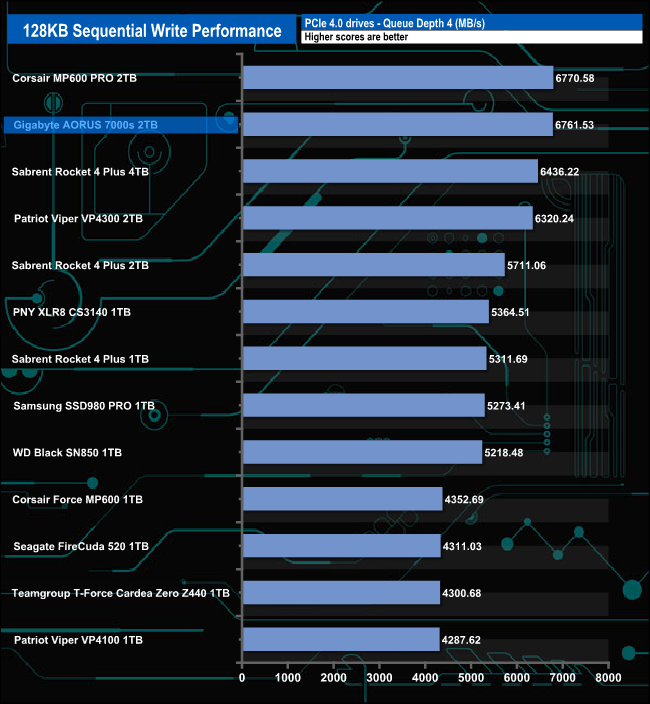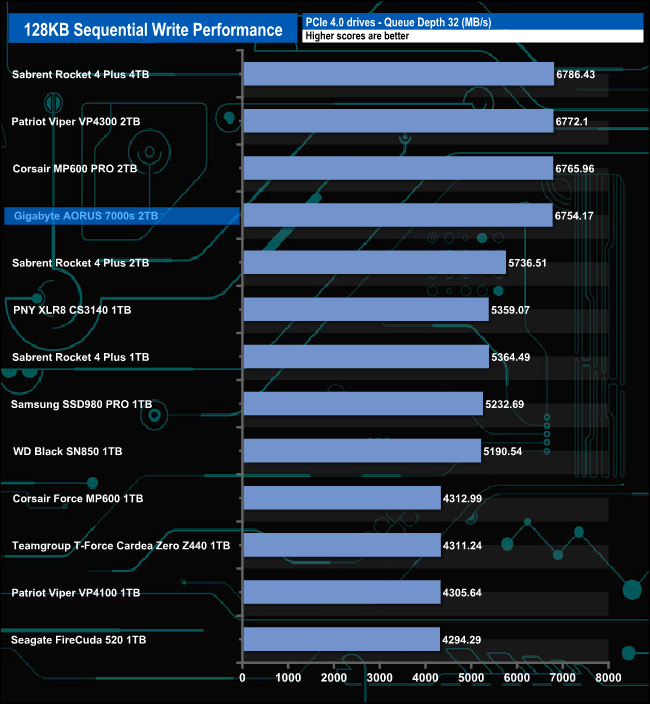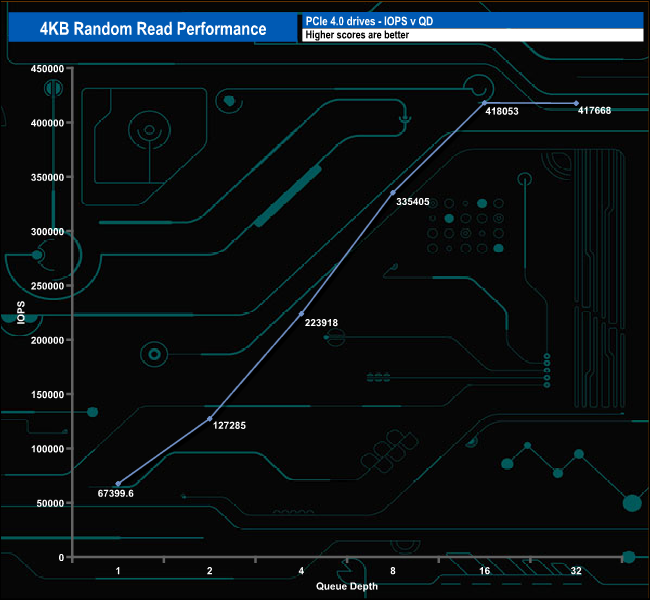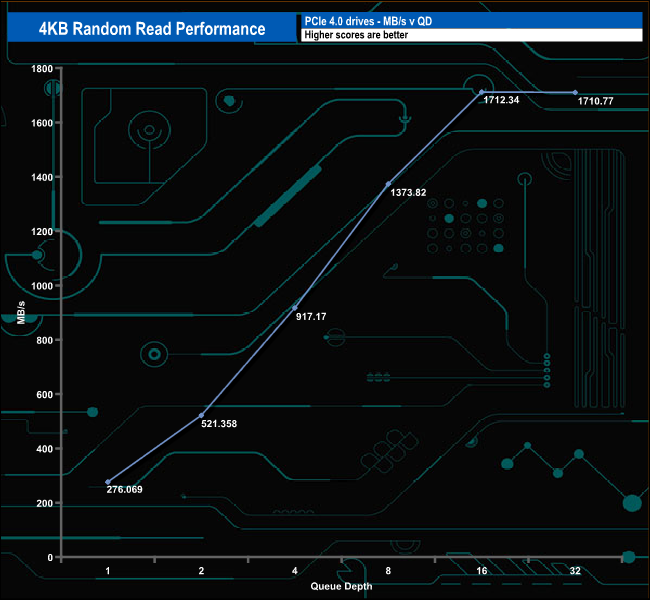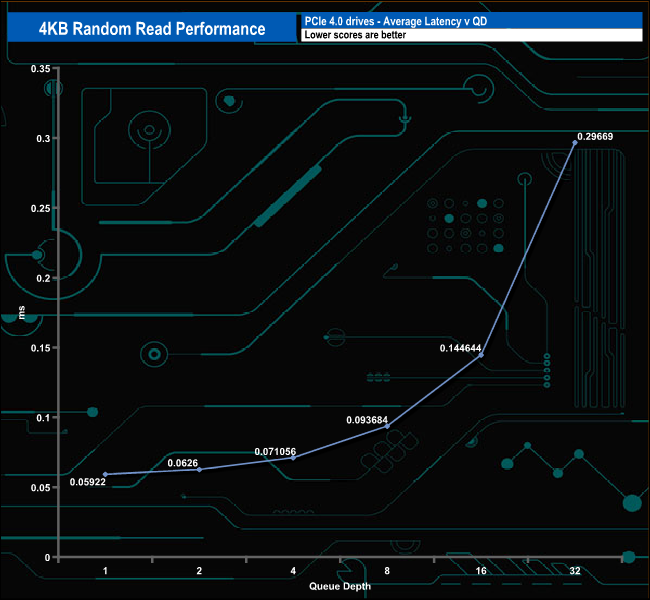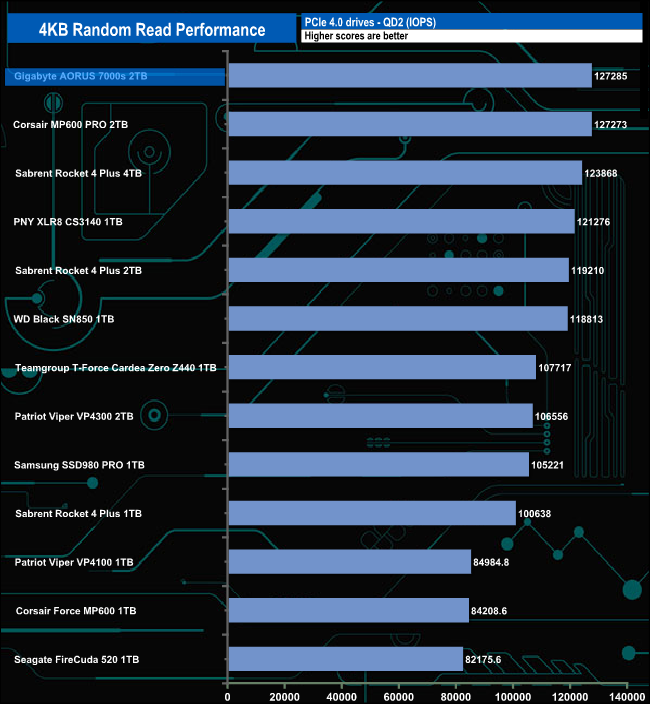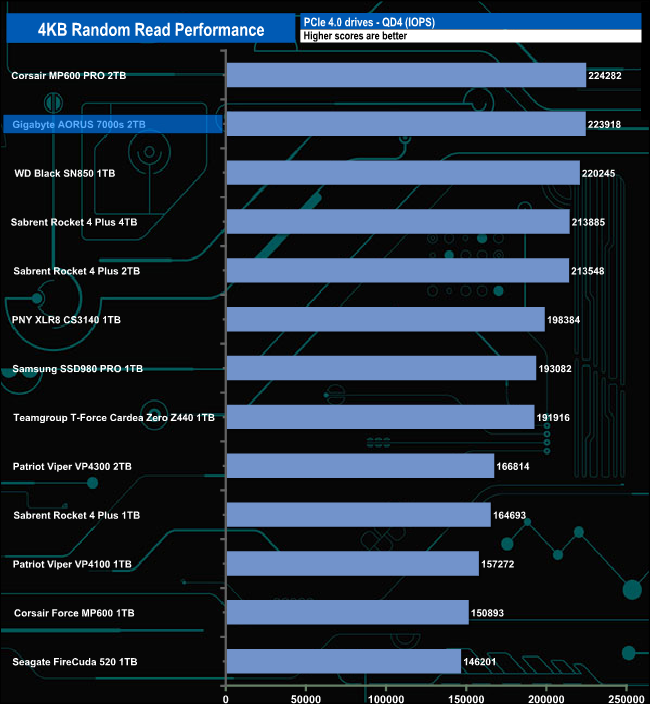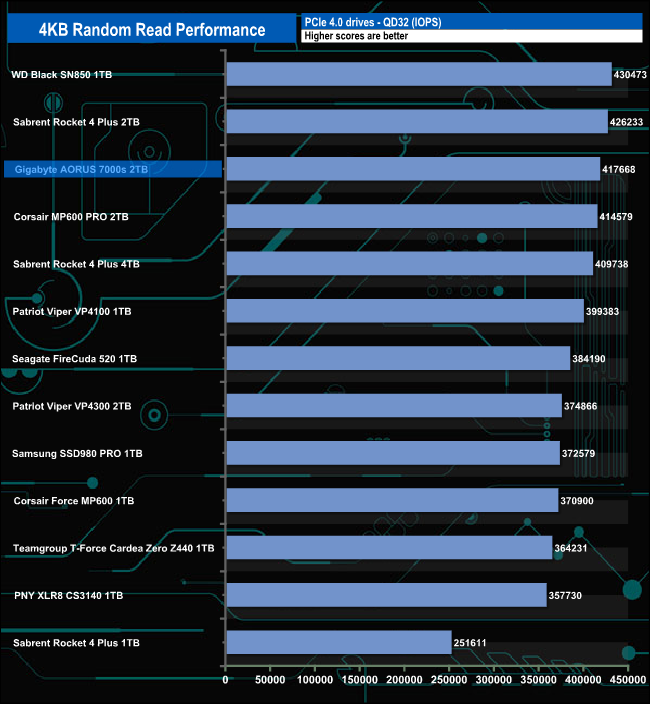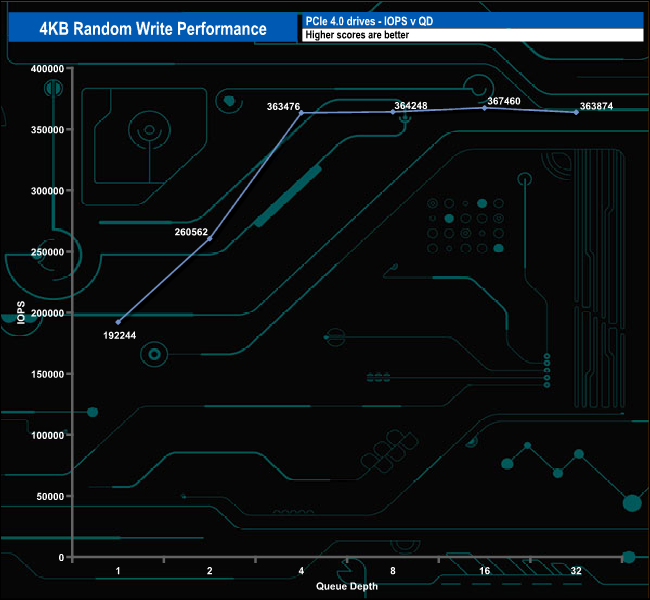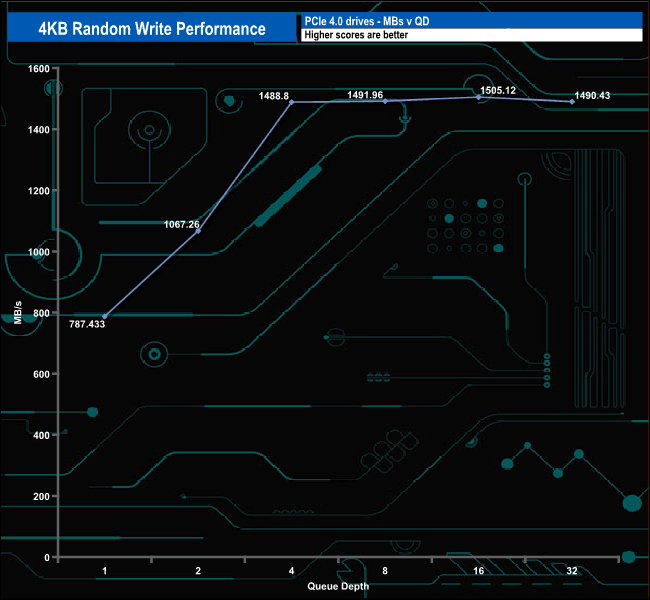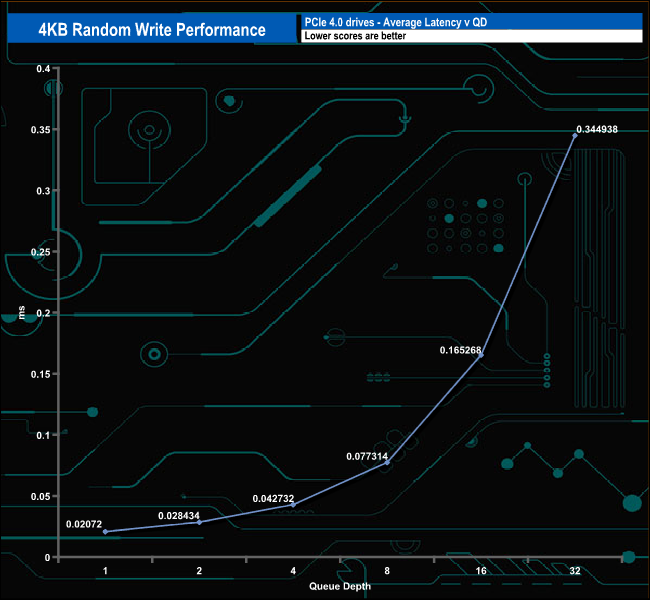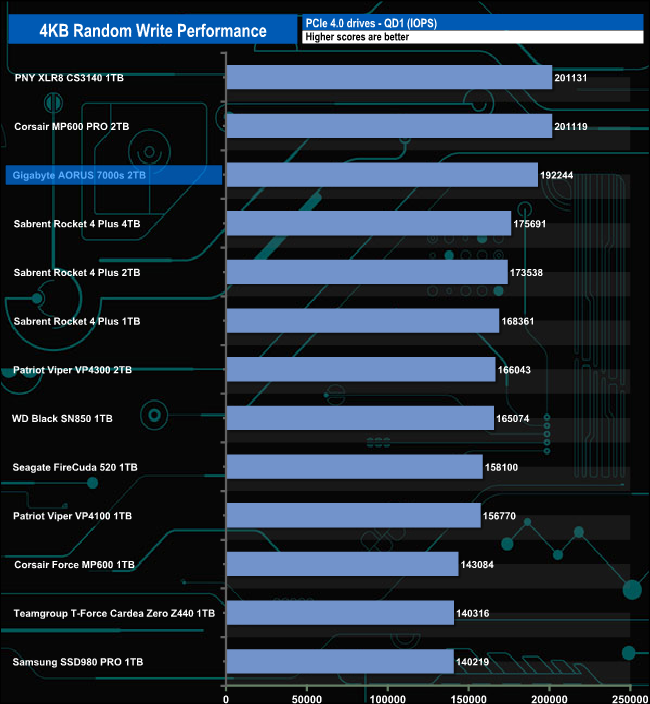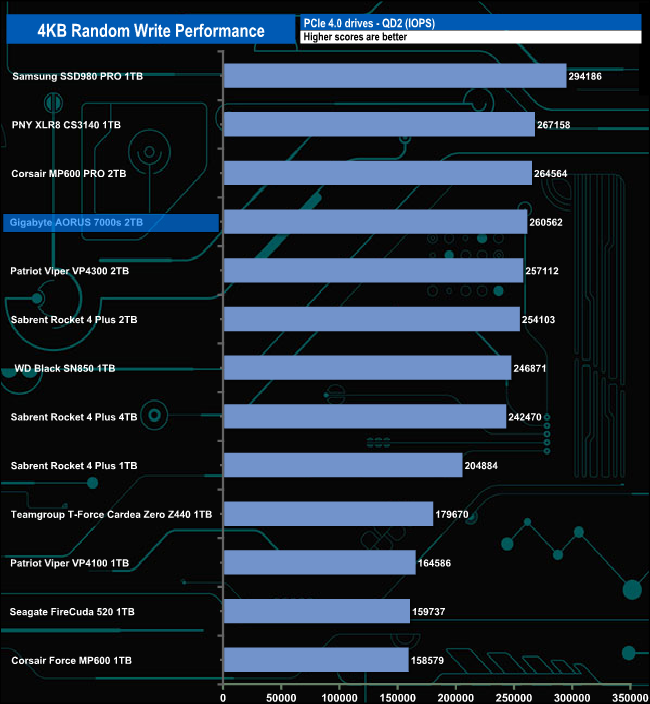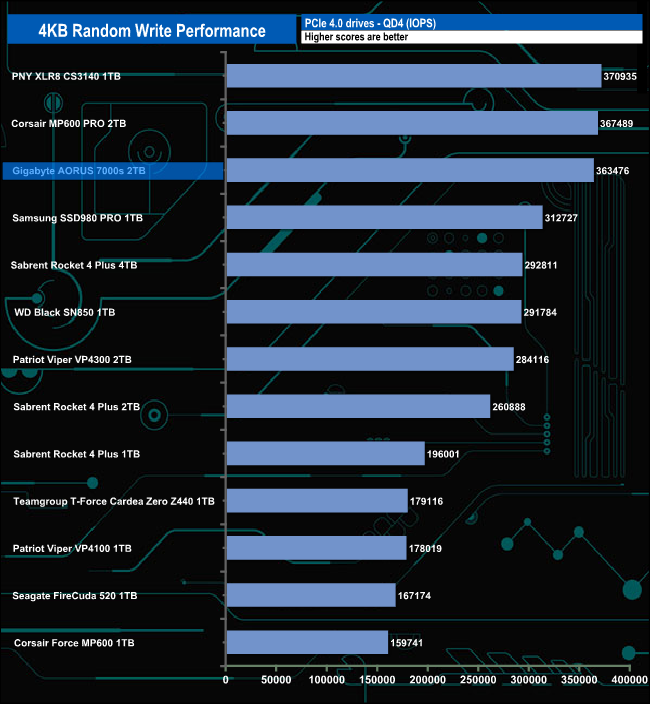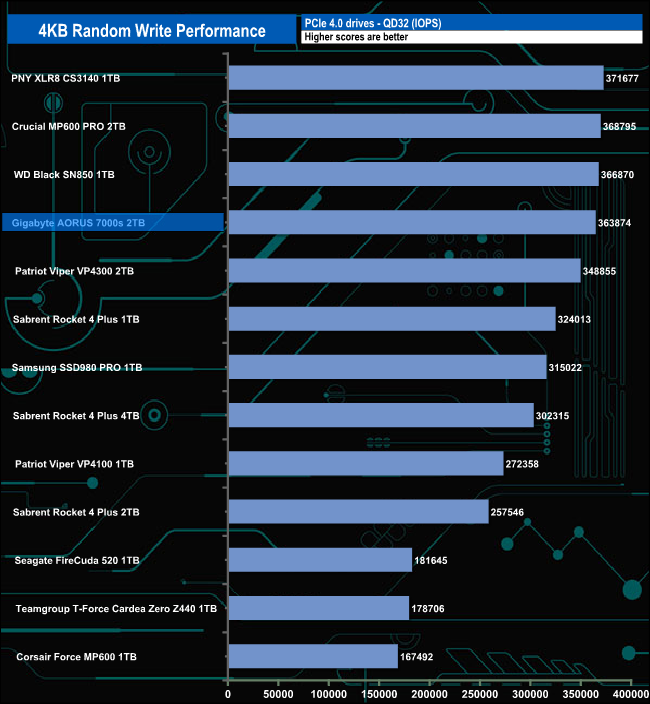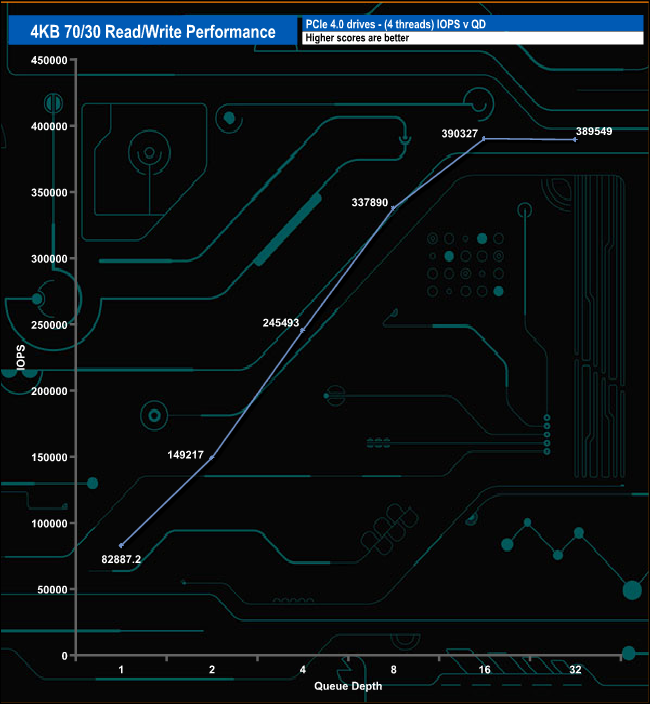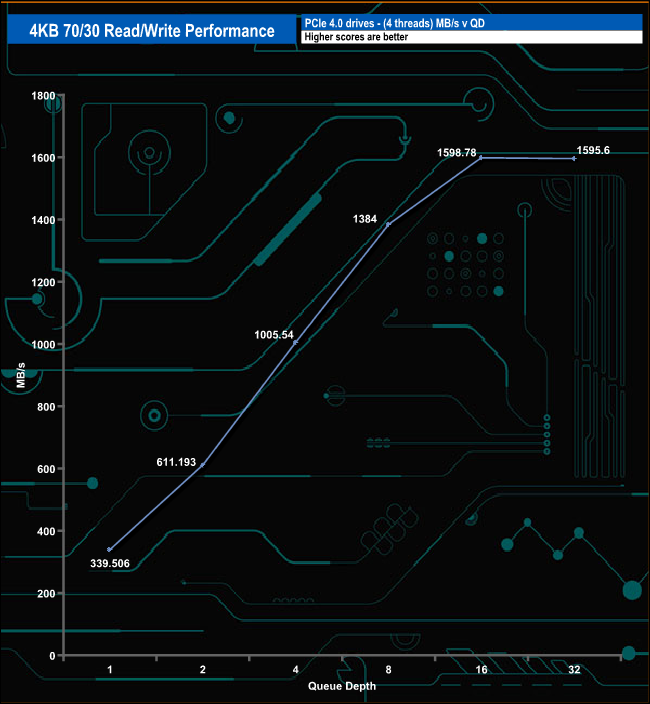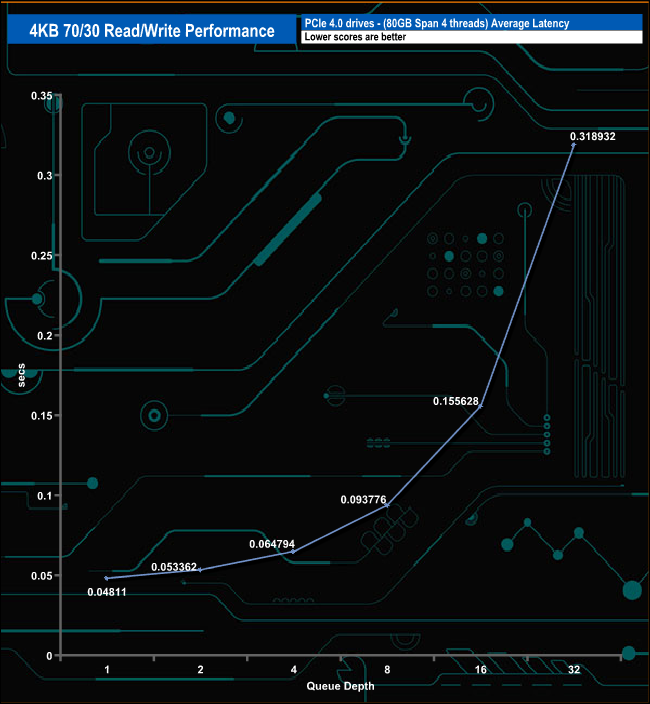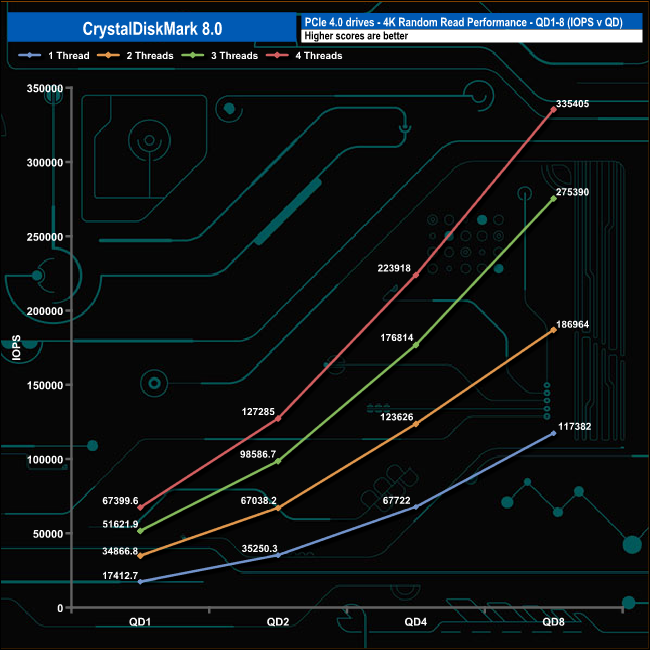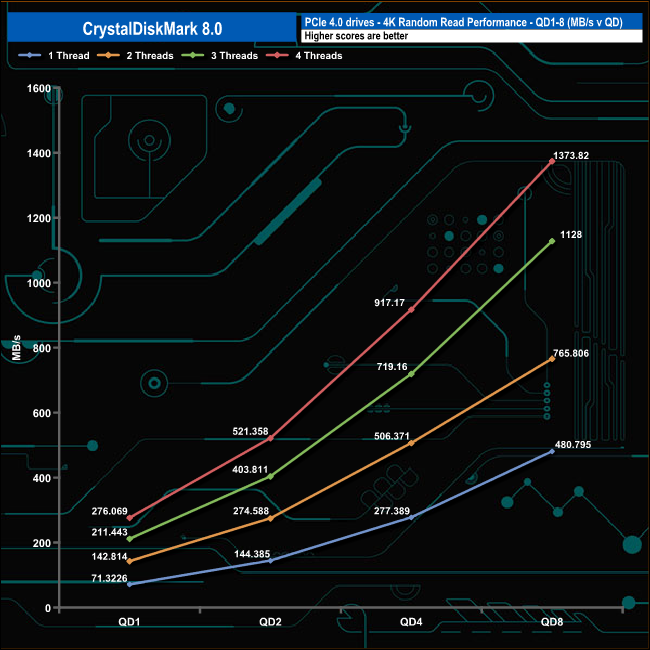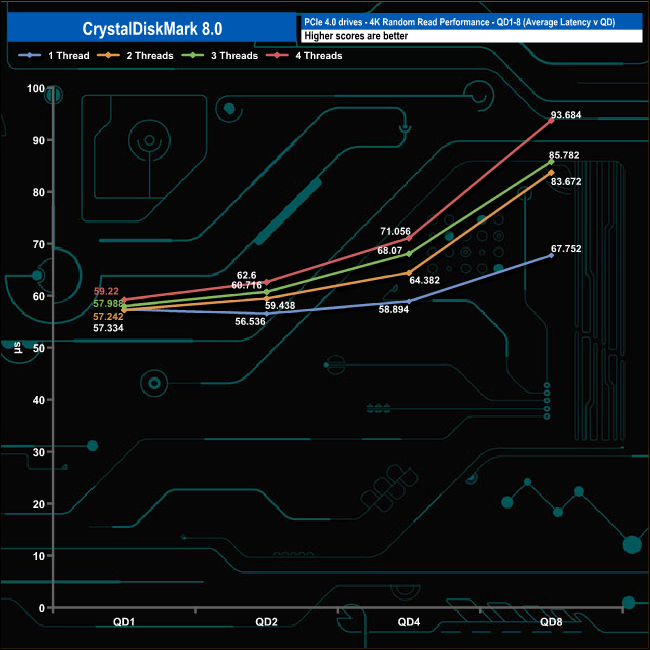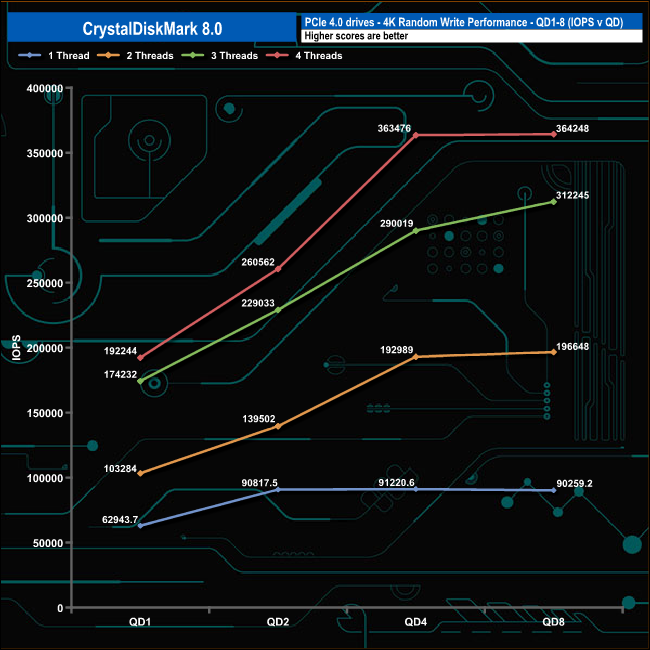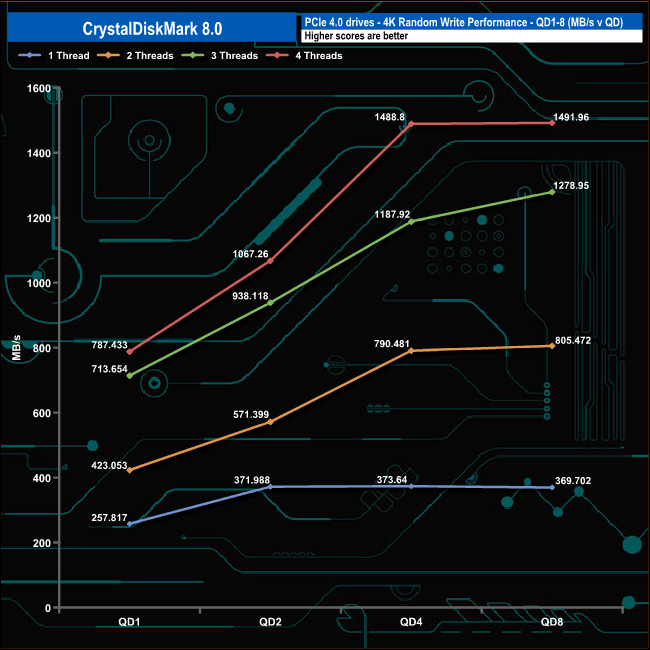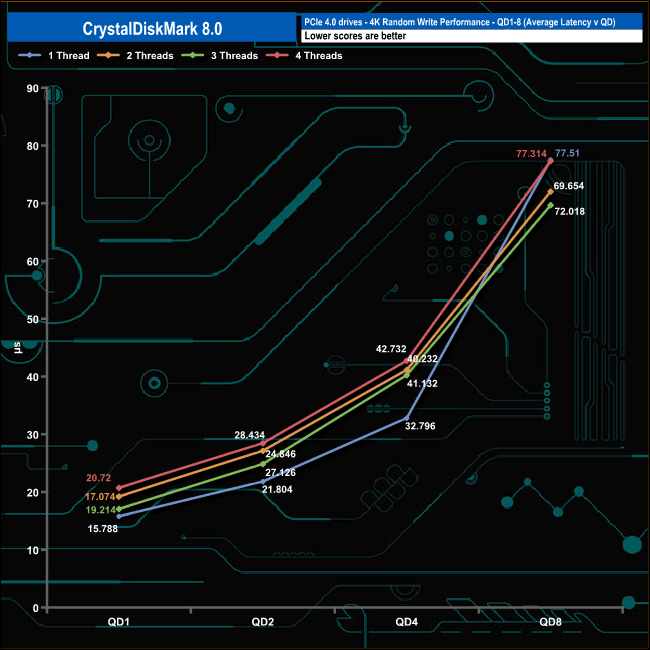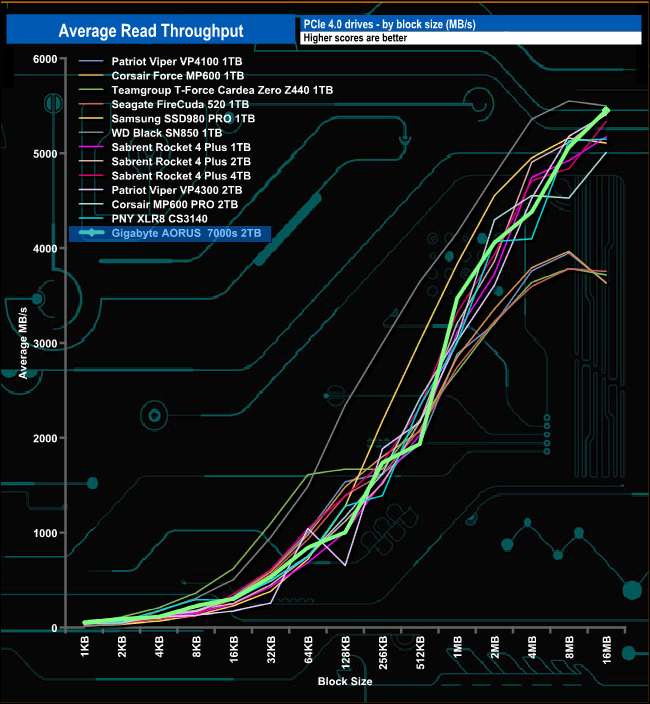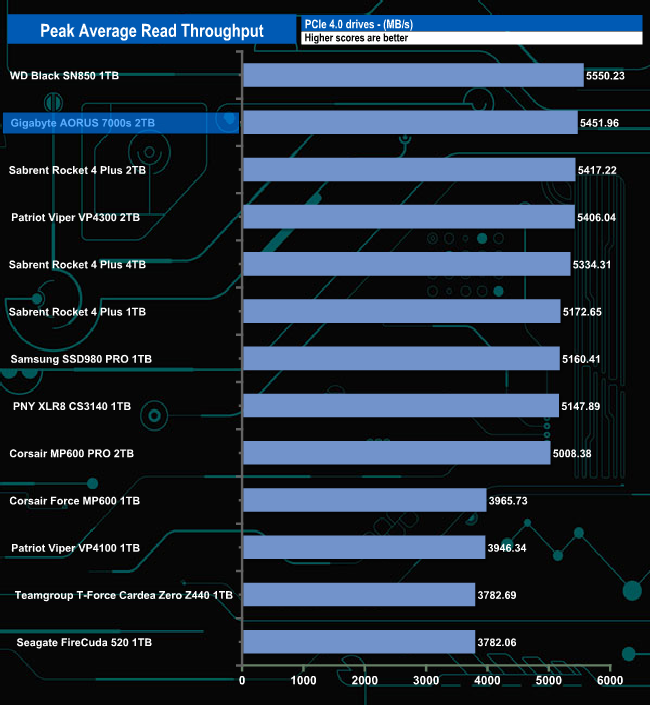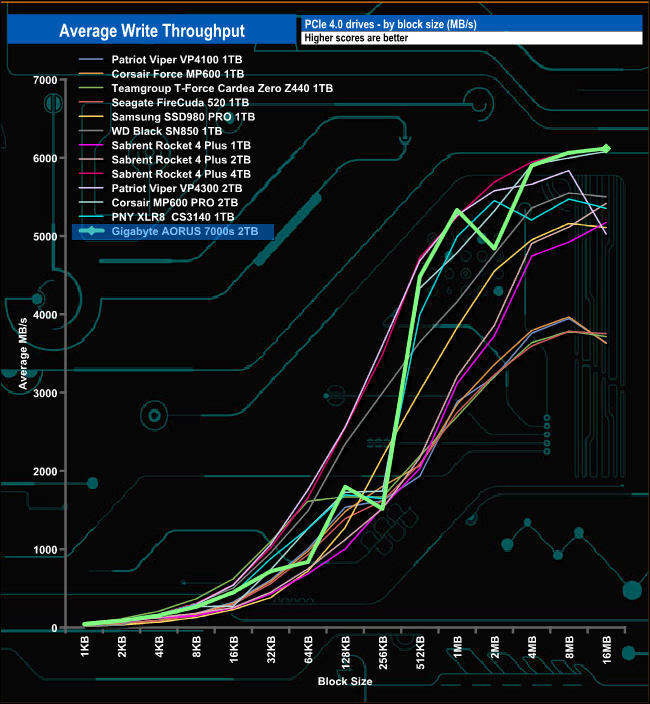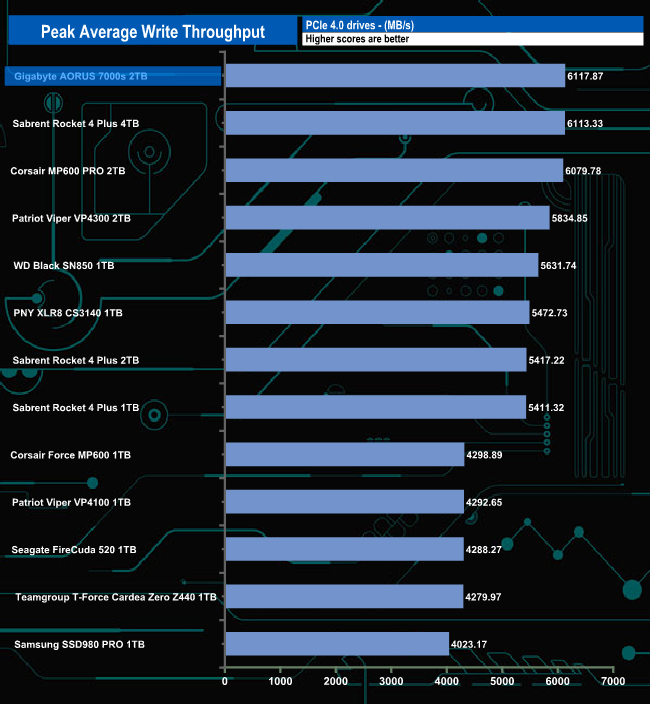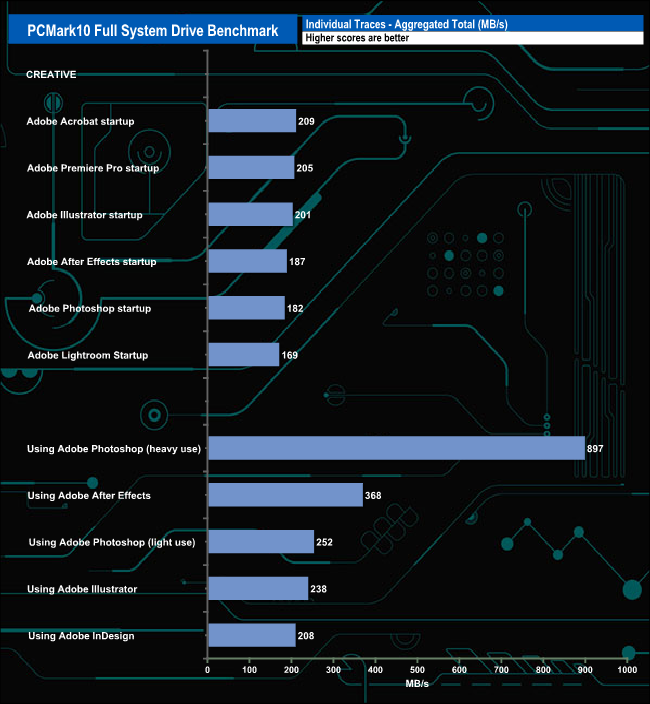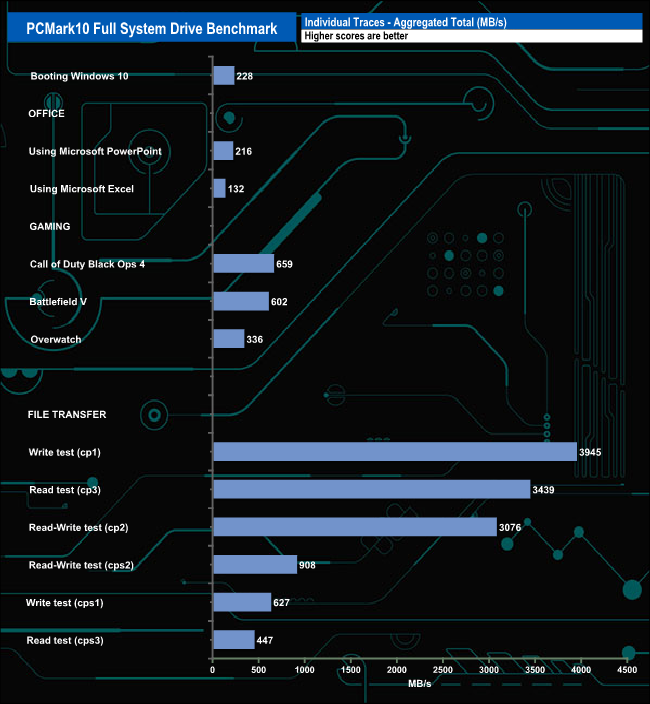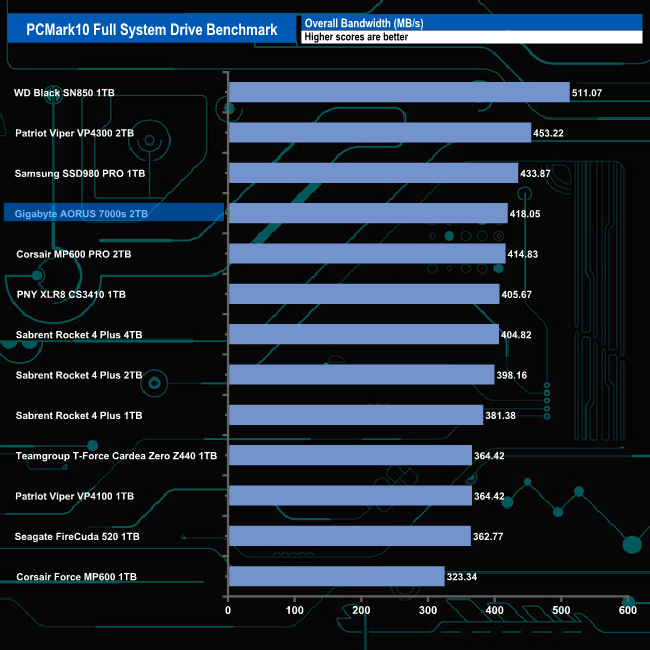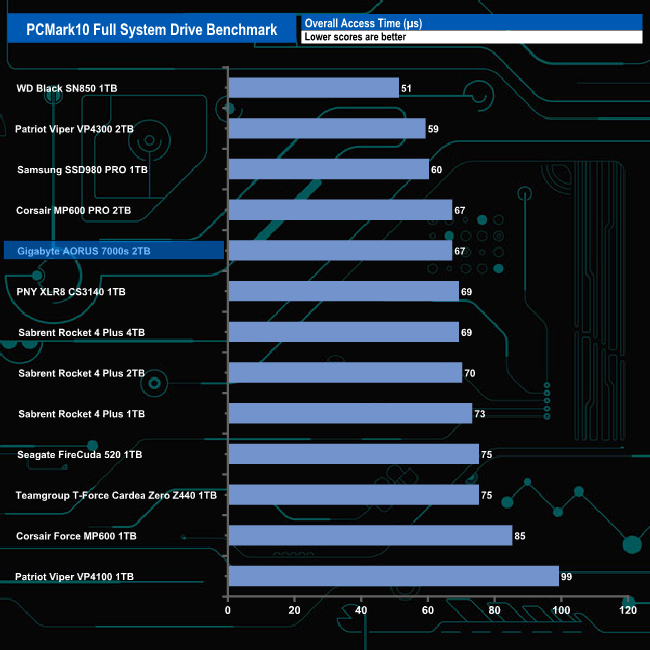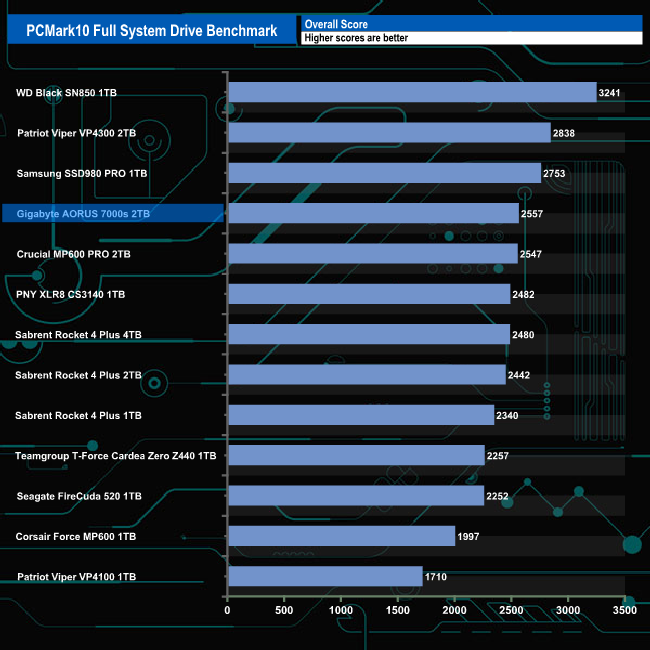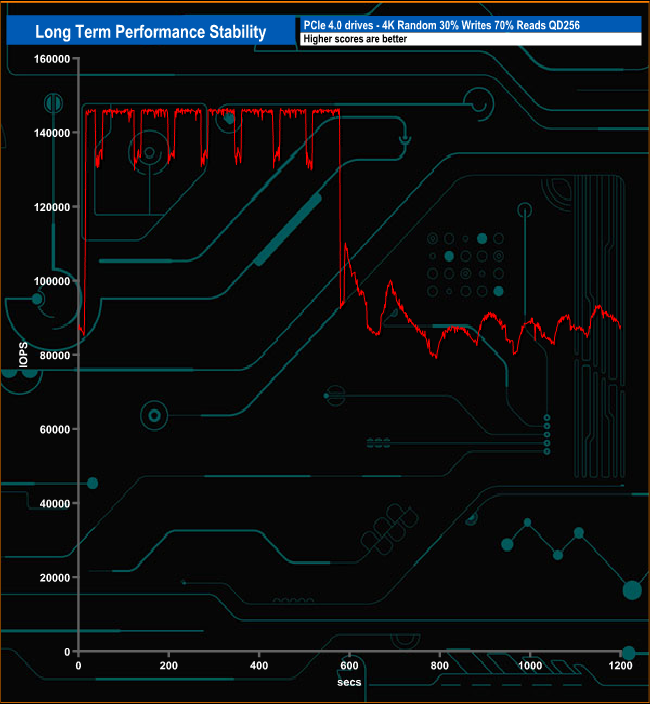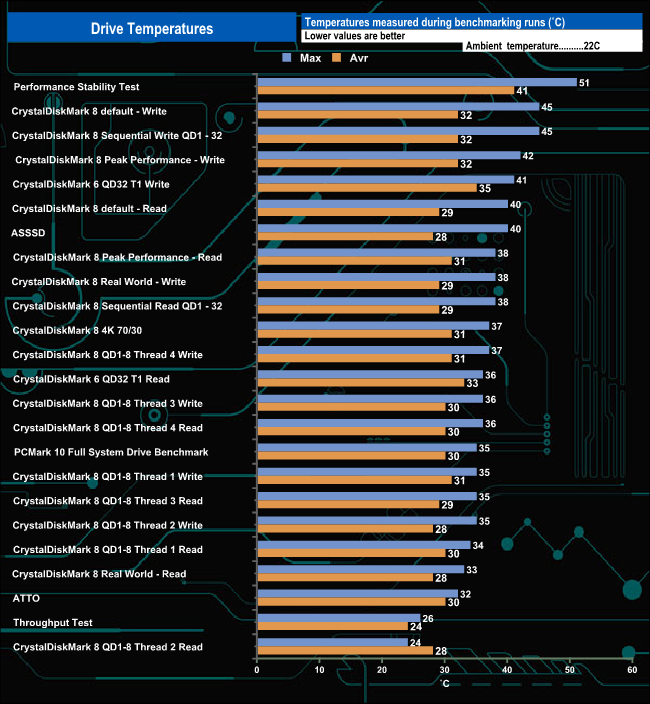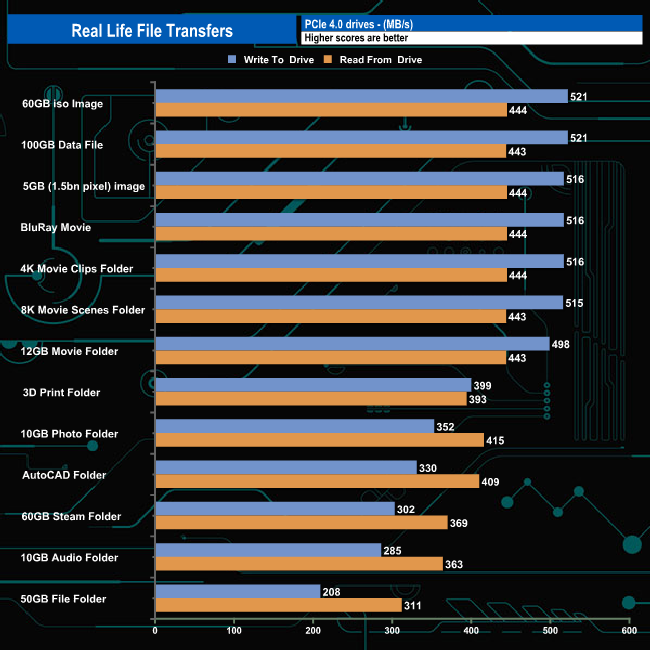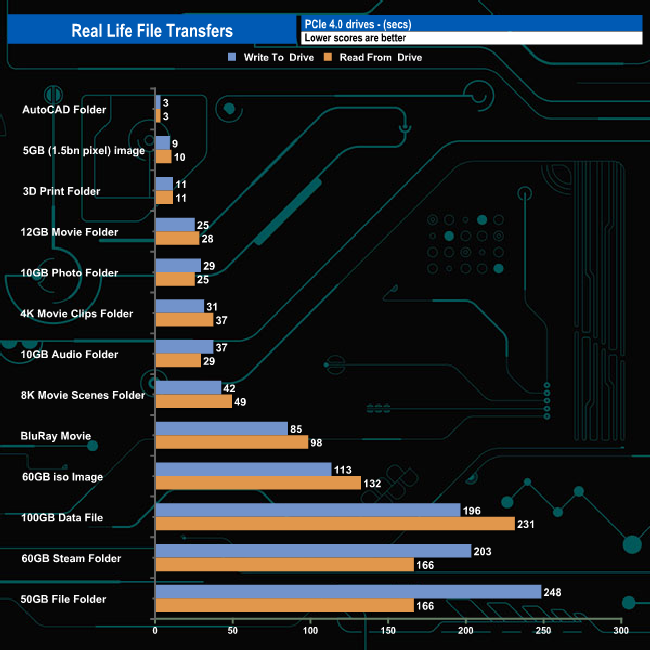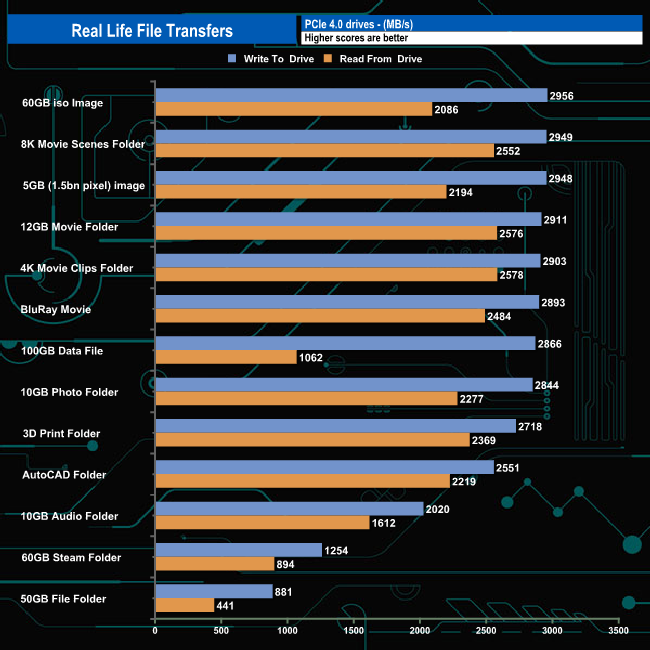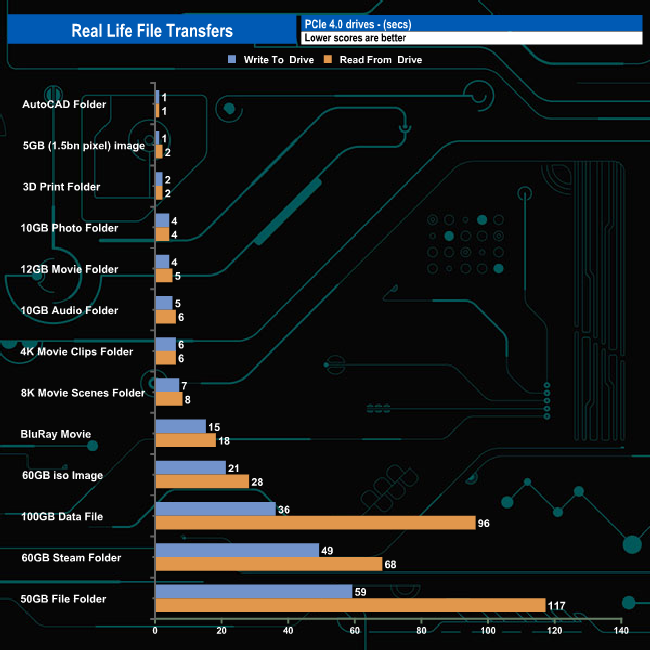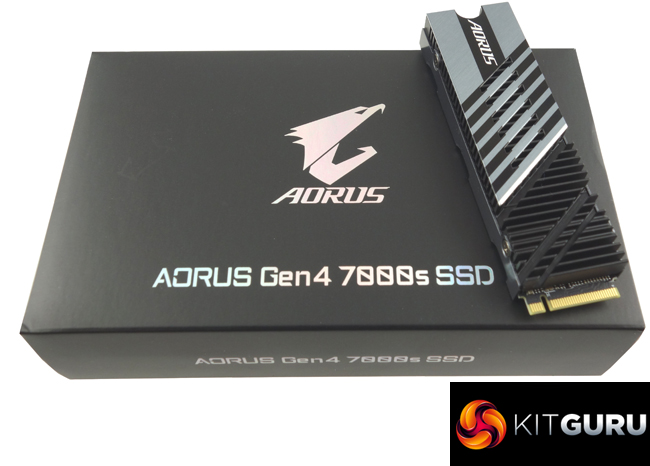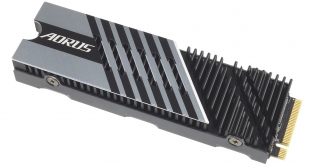
Gigabyte's Aorus 7000s family of SSDs is the company's flagship PCIe Gen4 single-drive range (Gigabyte offers multi-drive Gen4 AIC units as well). The 7000s uses the ever-popular combination for the latest generation of Gen4 drives, with a Phison E18 controller and 96-Layer 3D TLC NAND.
Just two models make up the 7000s product line at the time of writing, 1TB and 2TB (the drive we are reviewing here). Both drives are rated up to 7,000MB/s for Sequential reads with the 1TB drive rated at up to 5,500MB/s for Sequential writes and the 2TB drive faster at 6,850MB/s. As for random 4K speeds, the 2TB drive is rated as up to 650,000 IOPS for reads and up to 700,000 IOPS for writes. The 1TB drive has the same random write figure as the 2TB with random reads down to 350,000 IOPS.
To help alleviate any problems due to excessive heat, Gigabyte has designed a fairly low profile, multi finned heatsink for the Aorus 7000s which has a nanocarbon coating to help with heat dissipation.
Official power consumption figures for the drive are 7.6W for average active reads, 8.4W for average active writes and under 30mW at idle. The endurance of the 2TB drive is stated as 1,400TBW and Gigabyte back the drive with a 5-year limited warranty.
Physical Specifications:
- Usable Capacities: 2TB.
- NAND Components: Micron 96-Layer 3D TLC NAND.
- NAND Controller: Phison PS5018-E18.
- Cache: 2GB DDR4.
- Interface: PCIe Gen4 x4 / NVMe 1.4.
- Form Factor: M.2 2280.
- Dimensions: 80.5 x 23.5 x 11.4mm.
- Drive Weight: 38g.
Firmware Version: EIFM21.1
Gigabyte's Aorus 7000s comes in a compact, well-built box that just has the Aorus logo on it. The box has an outer sleeve that has the Aorus logo and drives name on the front.
The back of the sleeve has multilingual details about the drive interface and Sequential read/write speeds.
The drive sits firmly in a high-density foam insert in the box.
The drive uses a well-designed aluminium heatsink that looks good in its silver and black finish but more importantly has a decent number of cooling fins along its length. The 7mm high heatsink has a nanocarbon coating which Gigabyte claim helps with heat dissipation. The heatsink comes in two parts, the finned top assembly and an aluminium base plate. Each of these parts has a thick dual-sided thermal pad that runs the length of the cooler with the drive sandwiched between the two pads. The top assembly is fixed to the base plate via four tiny screws so it's easily removed if you choose to use a motherboard M.2 cooling system.
The 2TB Aorus 7000s is built on a dual-sided format. One side of the PCB holds the Phison PS5018-E18 8-channel controller, four 256GB packages of Micron 96-layer 3D NAND and a 1GB SK hynix DDR4 cache chip. The reverse side of the board holds another four 256GB NAND packages and a second 1GB cache IC.
The Phison PS5018-E18 is an 8-channel controller built on a 12nm process supporting the latest NVMe 1.4 specifications. The 2nd generation PCIe Gen4 controller uses Triple ARM Cortex R5 CPUs together with a pair of CoXProcessor’s supporting an interface speed of up to 1,600MT/s per channel.
The E18 supports Phison’s 4th Gen LDPC engine and comes with End-To-End Data Path Protection. It supports AES 128/256bit hardware encryption and TCG & Opal 2.0, Pyrite, Sanitize and Crypto Erase technologies.
Gigabyte's SSD management utility for the 7000s is called the Aorus SSD Tool Box. It's been recently updated although it still remains pretty basic in comparison with some of its competitors.
For testing, the drives are all wiped and reset to factory settings by HDDerase V4. We try to use free or easily available programs and some real-world testing so you can compare our findings against your own system.
This is a good way to measure potential upgrade benefits.
Main system:
AMD Ryzen 5 3600X, 16GB DDR4-2400, Sapphire R9 390 Nitro and an MSI MPG X570 Gaming Edge Wifi motherboard.
Other drives:
Corsair MP600 PRO 2TB
Corsair Force MP600 1TB
Patriot Viper VP4300 2TB
Patriot Viper VPN4100 1TB
PNY XLR8 CS3140 1TB
Sabrent Rocket 4 Plus 1TB
Sabrent Rocket 4 Plus 2TB
Sabrent Rocket 4 Plus 4TB
Samsung SSD980 PRO 1TB
Seagate FireCuda 520 1TB
Teamgroup T-Force Cardea Zero Z440 1TB
WD Black SN850 1TB
Software:
Atto Disk Benchmark 4.
CrystalMark v6 & v8.
AS SSD 2.0.
Futuremark PC Mark 10.
All our results were achieved by running each test five times with every configuration this ensures that any glitches are removed from the results. Trim is confirmed as running by typing fsutil behaviour query disabledeletenotify into the command line. A response of disabledeletenotify =0 confirms TRIM is active.
CrystalDiskMark is a useful benchmark to measure theoretical performance levels of hard drives and SSD’s. We are using versions 6.0 and 8.0.
Gigabyte's Aorus 7000s does seem to struggle with the 4K QD32 T1 test in CrystalDiskMark 6. Having said that we could confirm the official maximum Sequential read performance figure for the drive of 7,000MB/s with a tested CDM v6 read figure of 7,131MB/s (switching to compressed data saw this figure rise to 7,457MB/s). The tested best write figure of 6,771MB/s is 79MB/s short of the official Sequential maximum of 6,850MB/s.
Comparing the two CrystalDiskMark result screens shows that the Phison E18 controller is much more efficient when reading compressible Sequential and 4K data at a queue depth of 1.
CrystalDiskMark 8
CrystalDiskMark 8 comes with a couple of interesting ready-made testing profiles as well as a dedicated NVMe setting. The best tested sequential figures for reads, 7,446MB/s (Peak Performance profile, compressed data), definitely confirms the official 7,000MB/s read figure for the drive. The best tested CrystalDiskMark 8 write figure was 6,769MB/s (Peak Performance profile, compressed data), a little short of the official maximum of 6,850MB/s.
The best tested random 4K figures in CDM8 for the drive was the 659,510.99 IOPS (in the Peak Performance profile using compressed data) for reads which is actually a little better than the official up 650,000 IOPS. However, the best tested random write figure of 601,004.88 IOPS is some way short of the official 700,000 IOPS maximum for the drive.
The ATTO Disk Benchmark performance measurement tool is compatible with Microsoft Windows. Measure your storage systems performance with various transfer sizes and test lengths for reads and writes. Several options are available to customize your performance measurement including queue depth, overlapped I/O and even a comparison mode with the option to run continuously.
Use ATTO Disk Benchmark to test any manufacturers RAID controllers, storage controllers, host adapters, hard drives and SSD drives and notice that ATTO products will consistently provide the highest level of performance to your storage.
We are using version 4.0 for our NVMe disk tests.
Gigabyte rate the Sequential read/write performance of the 2TB 7000s as up to 7,000MB/s and 6,850MB/s respectively. Using the ATTO benchmark we couldn't quite hit those maximums, the tested drive producing a read figure of 6,820MB/s with writes at 6,440 MB/s.
AS SSD is a great free tool designed just for benching Solid State Drives. It performs an array of sequential read and write tests, as well as random read and write tests with sequential access times over a portion of the drive. AS SSD includes a sub suite of benchmarks with various file pattern algorithms but this is difficult in trying to judge accurate performance figures.
The Gigabyte Aorus 7000s read score of 2838 is good enough to put the drive into third place in our ASSSD result chart.
We used CrystalDiskMark 8‘s custom settings to test the Sequential read and write performance of the drive through a range of queue depths. The setup for the tests is listed below.
128KB Sequential Read / Write.
Transfer Request Size: 128KB, Thread(s): 1, Outstanding I/O: 1-32.
The Gigabyte Aorus 7000s produced a best sequential read figure of 6,899.26MB/s (QD32) under testing, a little short of the official maximum of 7,500MB/s. The best sequential write figure we saw was 6,763.68MB/s (QD8), again short of the official maximum of 6,850MB/s.
128KB Sequential Read v QD comparison.
At queue depths 1 to 4, the Aorus 7000s sits in the bottom half of the results charts, alongside other E18 equipped drives, but does start to climb up the chart at QD32.
128KB Sequential Write v QD comparison.
Comparing the Aorus 7000s to its competitors in the Sequential write result charts shows it to have very good performance at QD1 (behind only Patriot's Viper VP4300 and the MP600 PRO from Corsair), while at QDs 2 and 4 it lies second behind the MP600 PRO. At QD32 it drops to fourth on the list.
We used CrystalDiskMark 8‘s custom settings to test the 4K random read performance of the drive through a range of queue depths. The setup for the tests is listed below.
Transfer Request Size: 4KB, Outstanding I/O: 1-32.
In our 4K random read test, the drive peaked at the QD16 mark (418,053 IOPS) before dropping back slightly to finish the test run at 417,668 IOPS but that peak number is still way behind the official 650,000 IOPS.
4K Random Read v QD Performance
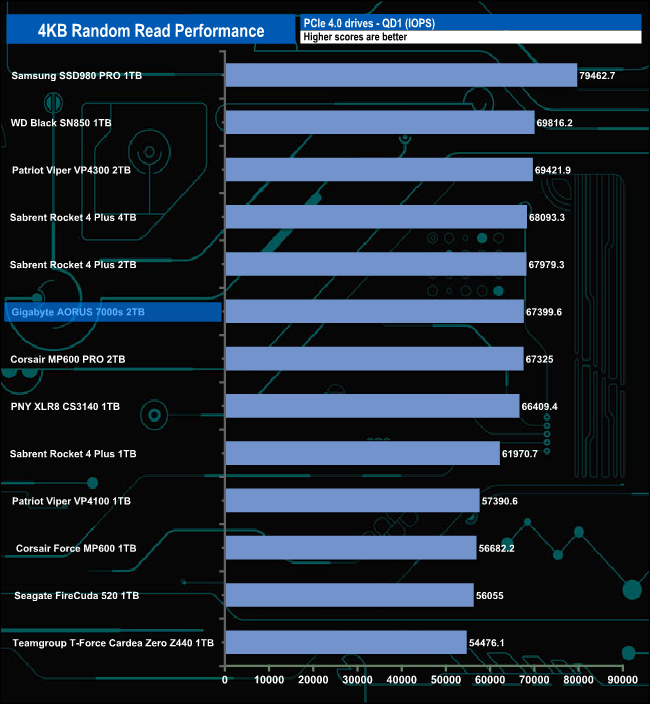
At QD1 the Aorus 7000s sits in at the halfway mark in our 4K random read results chart. At a QD of 2, the drive tops the charts before slowly dropping down the list as the queue depth deepens.
We used CrystalDiskMark 8‘s custom settings to test the 4K random read performance of the drive through a range of queue depths. The setup for the tests is listed below.
Transfer Request Size: 4KB, Outstanding I/O: 1-32.
In our 4-threading 4K random write testing, the drive peaked at 367,460 IOPS at a QD of 16 before dropping back to 363,874 IOPS at the conclusion of the test. Both figures are way behind the official 700,000 IOPS. We did run a quick test at QD32 with eight threads and saw the result rise to 487,426 IOPS, still nowhere near the official figure.
4K Random Write v QD Performance
The drive is consistent in its 4K random write performance at all the tested queue depths, never dropping out of the top 5 in our results charts.
We used CrystalDiskMark 8’s custom settings to test the 4K 70/30 mixed read/write performance of the drive through a range of queue depths.
The Aorus 7000s displays strong performance in the 4K 70/30 read/write mix test. Peak performance comes at a queue depth of 16 with 390,327 IOPS before dropping back slightly to finish the test run at 389,549 IOPS.
We used CrystalDiskMark 8 to test the random performance of the drive at lower queue depths (QD1 – QD8 where most of the everyday workloads occur) using 1 to 4 threads.
The 2TB Gigabyte Aorus 7000s 4K read performance climbs smoothly throughout the tested queue depths and threads. At QD1 the performance of the drive ranges from 17,412 IOPS (71.32MBs) using a single thread up to 67.399 IOPS (276.06MB/s) using 4-threads.
When it comes to 4K random writes, the only result which shows anything like a smooth performance curve is when the drive was tested using three threads. Using two and four threads the drive climbs steadily from QD1 to QD4 before plateauing out slightly. Using a single thread sees the drive peaking at QD4 at 91,220.6 IOPS before dropping back to finish the test run at 90,259 IOPS.
In our read throughput test, the drive peaks at 5,451.96MB/s at the end of the test which is some way short of the official maximum of 7,000MB/s.
Although our peak read throughput speed was way short of the official maximum figure, it still was good enough to put the Aorus 7000s into second spot on our results chart.
As in our read throughput test, in our write throughput test the drive peaks at the 16MB block mark at 6,117.87MB/s. Even though this is still shy of the maximum official figure of 6,850MB/s it's a good deal closer to it than the read performance.
That 6,117.87MB/s figure may be a fair bit short of the official maximum but it's still good enough to put the Aorus 7000s on top of the pile in our results chart.
The PCMark 10 Full System Drive Benchmark uses a wide-ranging set of real-world traces from popular applications and common tasks to fully test the performance of the fastest modern drives. The benchmark is designed to measure the performance of fast system drives using the SATA bus at the low end and devices connected via PCI Express at the high end.
The goal of the benchmark is to show meaningful real-world performance differences between fast storage technologies such as SATA, NVMe, and Intel’s Optane. The Full System Drive Benchmark uses 23 traces, running 3 passes with each trace. It typically takes an hour to run.
Traces used:
Booting Windows 10.
Adobe Acrobat – starting the application until usable.
Adobe Illustrator – starting the application until usable Adobe Premiere Pro – starting the application until usable.
Adobe Photoshop – starting the application until usable.
Battlefield V – starting the game until the main menu.
Call of Duty Black Ops 4 – starting the game until the main menu.
Overwatch – starting the game until main menu.
Using Adobe After Effects.
Using Microsoft Excel.
Using Adobe Illustrator.
Using Adobe InDesign.
Using Microsoft PowerPoint.
Using Adobe Photoshop (heavy use).
Using Adobe Photoshop (light use).
cp1 Copying 4 ISO image files, 20 GB in total, from a secondary drive to the target drive (write test).
cp2 Making a copy of the ISO files (read-write test).
cp3 Copying the ISO to a secondary drive (read test).
cps1Copying 339 JPEG files, 2.37 GB in total, to the target drive (write test).
cps2 Making a copy of the JPEG files (read-write test).
cps3 Copying the JPEG files to another drive (read test).
Gigabyte's Aorus 7000s handled PCMark10’s Full System Drive benchmark very well as you might expect from a Gen4 drive. The standout figure in the creative group of tests is the 897MB/s for the Heavy Use Adobe Photoshop trace. In the file transfer set of tests, the best performance from the drive came in the cp1 Write test at 3,945MB/s.
Overall the Aorus 7000s performs well in PCMark10’s Full System Drive benchmark with an overall bandwidth score of 418.05MB/s, the fastest we've seen to date for a drive using Phison's E18 second-generation controller.
For the long term performance stability test, we set the drive up to run a 20-minute 4K random test with a 30% write, 70% read split, at a Queue Depth of 256 over the entire disk. The 2TB Gigabyte Aorus 7000s averaged 114,543 IOPS for the test with a very good 78% performance stability.
Gigabyte has fitted the Aorus 7000s with a stylish looking and at 7mm high, quite low profile aluminium heatsink. The heatsink has a good number of fins and has a nanocarbon coating to help with heat dissipation. It works well too, as the hottest the drive got during benchmarking was the 51C when running the stability test.
To test real life performance of a drive we use a mix of folder/file types and by using the FastCopy utility (which gives a time as well as MB/s result) we record the performance of drive reading from & writing to a 256GB Samsung SSD850 PRO.
We use the following folder/file types:
- 100GB data file.
- 60GB iso image.
- 60GB Steam folder – 29,521 files.
- 50GB File folder – 28,523 files.
- 12GB Movie folder – (15 files – 8 @ .MKV, 4 @ .MOV, 3 @ MP4).
- 10GB Photo folder – (304 files – 171 @ .RAW, 105 @ JPG, 21 @ .CR2, 5 @ .DNG).
- 10GB Audio folder – (1,483 files – 1479 @ MP3, 4 @ .FLAC files).
- 5GB (1.5bn pixel) photo.
- BluRay Movie – 42GB.
- 21GB 8K Movie demos – (11 demos)
- 16GB 4K Raw Movie Clips – (9 MP4V files).
- 4.25GB 3D Printer File Folder – (166 files – 105 @ .STL, 38 @ .FBX, 11 @ .blend, 5 @ .lwo, 4 @ .OBJ, 3@ .3ds).
- 1.5GB AutoCAD File Folder (80 files – 60 @ .DWG and 20 @.DXF).
The Gigabyte Aorus 7000s dealt with our real-life file transfers without any problems, showing very good consistency of performance for both reads and writes when dealing with the larger file sizes, averaging 515MB/s when writing to the drive and 443MB/s when reading the data back. As usual, it’s the small files in the Audio, Steam and File folders that cause the drive to slow down.
To get a measure of how much faster PCIe NVMe drives are than standard SATA SSDs we use the same files but transfer to and from a 2TB Kioxia Exceria Plus drive:
Switching over to an all NVMe storage environment saw transfer speeds for the large file transfers rocket and times taken drop dramatically. Eleven out of the thirteen write tests topped well over 2GB/s with five passing the 2.5GB/s mark. Nine of the read tests also passed 2GB/s, the best being the 2.57GB/s figure for reading the back of the 4K movie clips folder.
There's an ever-increasing number of second-generation PCIe Gen4 x 4 drives hitting the market. One of the latest is from Gigabyte in the shape of the Aorus 7000s series.
At the time of writing this review, the product line-up of the 7000S consists of just two drives, the 1TB and the flagship 2TB (the drive that's being reviewed here). Of all the second generation drives we seen to date the most common controller/NAND combination is Phison's second-generation controller, the PS5018-E18 teamed up with 96-layer 3D TLC NAND, and the Aorus 7000s doesn't deviate from that pattern.
Officially the drive is rated for up to 7,000MB/s and up to 6,850MB/s for Sequential read and writes respectively. Testing the drive with the ATTO benchmark we couldn't quite hit those maximums, the best we saw was 6,820MB/s for reads and 6,440MB/s for writes. Switching over to CrystalDiskMark 8 benchmark we could indeed confirm the official maximum Sequential read figure and even bettered it with the best test result of 7,446MB/s. The best Sequential write result of 6,769MB/s was however still shy of the official figure.
We could also confirm and even better a little the official maximum 4K random read figure of up 650,000 IOPS with a CDM 8 score of 659,510.99 IOPS. However as with the Sequential writes, the best random write figure of 601,004.88 IOPS some way short of the 700,000 IOPS official maximum.
The latest Gen4 drives produce blistering performance, but they are also pretty power hungry and produce a fair old amount of heat when pushed hard. We've seen drives like Corsair's MP600 PRO and PNY's XLR8 CS3140 using large heatsinks to tackle the heat question, and Corsair even take it one step further with the MP600 PRO Hydro X which supports water cooling.
Gigabyte has used an elegant looking finned aluminium heatsink, just 7mm high with a nanocarbon coating to help with heat dissipation on the Aorus 7000s. Should you want to make use of any motherboard M.2 cooling features then the good news is that the heatsink is easily removable by undoing four tiny screws. Not to be outdone by some of the larger heatsinks that adorn some Gen4 drives, Gigabyte also offers the 7000s ‘Prem.' version of the drive which has a massive twin heatpipe cooler that adds around 12mm to the length of the drive and 33.3mm to the height.
We found the 2TB version of Gigabyte's Aorus 7000s on Amazon UK for 364.99 (inc VAT) HERE.
Discuss on our Facebook page HERE.
Pros
- Overall performance.
- Endurance.
- Well designed and effective heatsink.
Cons
- Couldn't match the maximum official random write 4K figures.
- Tool Box utility is a bit basic.
KitGuru says: The 2TB Aorus 7000s is Gigabyte's fastest single drive SSD model to date. It comes with a well-designed heatsink that works well and should prevent any throttling, with the added bonus of being easy to remove should you want to use any integrated motherboard cooling solution.
Be sure to check out our sponsors store EKWB here
 KitGuru KitGuru.net – Tech News | Hardware News | Hardware Reviews | IOS | Mobile | Gaming | Graphics Cards
KitGuru KitGuru.net – Tech News | Hardware News | Hardware Reviews | IOS | Mobile | Gaming | Graphics Cards


